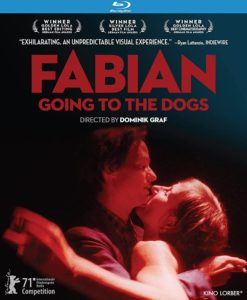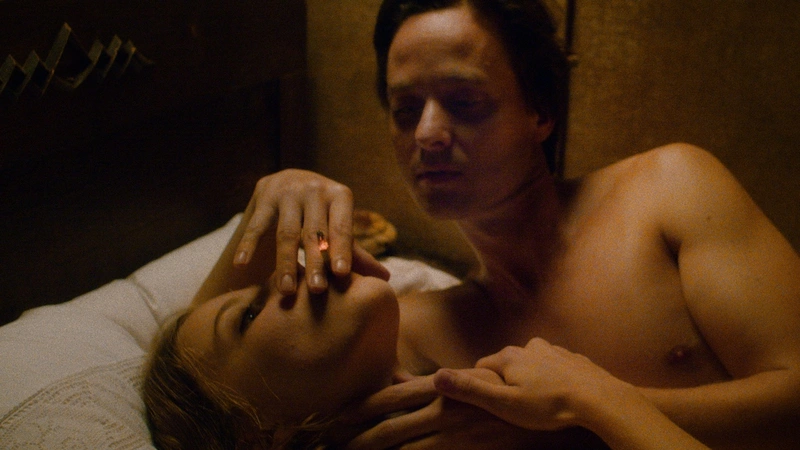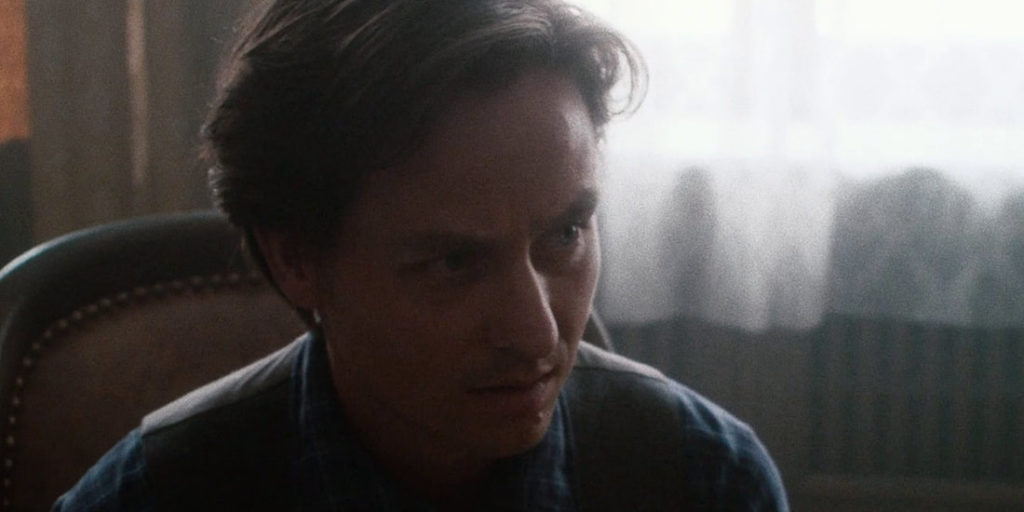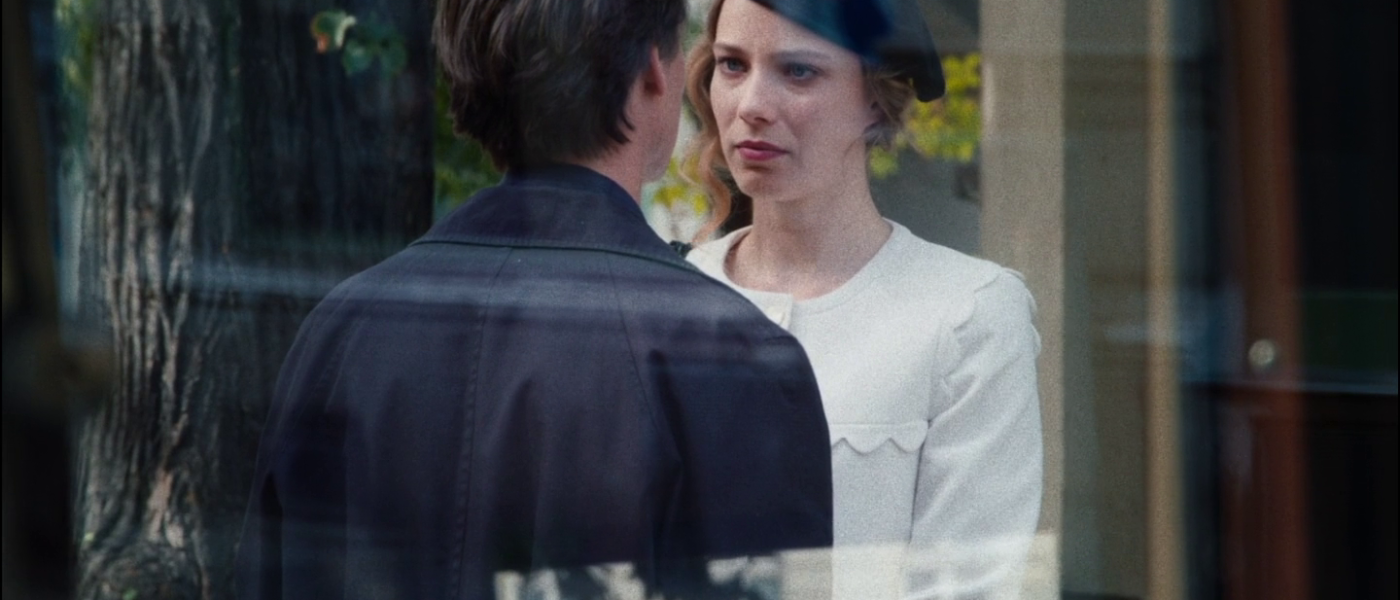German Allegory digs into its Fascist past
DIRECTED BY DOMINIK GRAF/GERMAN/2021
BLU-RAY STREET DATE: APRIL 12, 2022/KINO LORBER

Clocking in at just over three hours, director Dominik Graf’s character-based adaptation of Erich Kästner’s 1931 novel Fabian. Die Geschichte eines Moralisten owes a bit to several well-known films of different times and territories. One influence that particularly stood out, for its bold, shifting sprawl among other, better reasons, is Federico Fellini’s 1960 classic La Dolce Vita. Although the two films straddle the Second World War in equidistant opposite chronologically, Fellini’s being postwar Italian and Graf’s taking place in prewar Germany, in the year the book was published, themes and beats are fascinatingly similar.
Both films deftly change shape throughout while remaining true to themselves, both showcase the precarious recovery of a country that was antagonistic in the preceding war, and both culminate with a kind of shrug. Because that’s the way it goes. Fellini’s disaffected lead, Marcello (Marcello Mastroianni), maintains a doomed friendship with a wealthy male acquaintance, only later realizing the human importance of such a thing. So does Graf’s protagonist, Jakob Fabian (Tom Schilling). Both kick around in their respective towns in an existential funk as the world and the film changes shape around them. Unbeknownst to either, both are fueled by the vitality of connection, even though the world does whatever it can to drive wedges. Subsumed, they roll along, dejected curmudgeons in the making.
Released in the pandemic-reeling cinema-unfriendly year of 2021, it’s no shock that Fabian: Going to the Dogs (Fabian oder Der Gang vor die Hunde) tumbled between the cracks along with pretty much everything else. The first hour, at least, does what it can to assure, pandemic or no, that this film would be classified well outside the stuffy box labeled “historical dramas.”

Instead, Graf’s bizarre and unhinged barrage of “film stock” shifts (the visual texture changes multiple times; sometimes from shot to shot, and often within the same scene), bombastic graphics, quick vintage clips from the silent era, and off-the-wall music cues ensure that it’d get tossed into whatever abrasive box Oliver Stone’s Natural Born Killers got relegated to. If you ask me, it seems that Graf is attempting to grant himself the same kind of free abandon that has come to define Germany’s Weimar era, but on a budget. Some of the onscreen titles and bizarre transitions look like rudimentary uses of Adobe Premiere in an otherwise perfectly professional-looking film.
This formal daring, however, lasts just long enough to weed out the weaklings in the audience. Then Fabiandownshifts into the gear of something resembling a more normal movie. Graf’s commitment to handheld camerawork may come from a place of Terrence Malick, but it doesn’t do any favors in terms of complimenting any grandiose production aspirations. The question is whether Fabian: Going to the Dogs has any true grandiose aspirations. Not like an ordinary historical drama, that much is clear. And, not unlike Fellini circa 1960.
Per the title, “Going to the Dogs”, things don’t go well for Fabian. (For some reason, everyone calls him by his surname). No sooner is he terminated at his cushy job than an old businessman attempts to place him under contract to tend to the sexual needs of his insatiable, irritating wife. Fabian lands on his feet in that he gets into a relationship with Cornelia Battenberg (a brilliantly aglow and non-aglow Saskia Rosendahl), a driven aspiring actress and current starving artist. That’s all well and good until she makes him sign a contract that he will never stand in the way of her career. She’s so sweet when she serves it to him, though… Man, this guy and contracts…

Now, here’s where Fabian is nothing like La Dolce Vita: the way Fabian meets Cornelia. Their bonding as strangers during a long late-night stroll back to her place is so palpable with potential romance that one almost forgets that this film is a descent into miserabilism on a personal and national level. (Remember, this is 1931 Germany. Nazi signage is budding in the casual background. We watch as characters tip towards what will become swastika-branded fascism. It’s all here). When Fabian and Cornelia finally arrive, she invites him in. The subsequent sequence of postcoital naked dillydallying is so effervescent, so beautifully unguarded, and with a hilarious surprise… it perfectly sets us up for the degree of heart-crush Fabian feels when it all goes south. Will this match made in mayhem be salvaged? Fellini puts unobtainable Anita Ekberg in Trevi Fountain. Graf gives Fabian and Cornelia each other- and a spiking fever pitch of love’s peaks and valleys that Marcello in his permanent malaise will never know.
For his audio commentary, film critic Olaf Möller offers more of an insider’s view on the creative decisions and making of the film than is typical for these tracks. This is thanks to his own friendship and expertise on the career of Dominik Graf, which afforded him access to the set of Fabian. Möller cites as directorial influences G.W. Pabst and to a lesser extent, Truffaut. As lengthy as this film is, the track’s spareness and sluggishness is all the more forgivable. Still, it makes for cumbersome accompaniment. Perhaps Möller’s insights would’ve been better suited to a twenty-minute video featurette rather than this well-intentioned sprawl.
The ghostly visage of La Dolce Vita, among other works, I’m sure, looms heavily over Fabian. There are certain specifics that would qualify as big spoilers were I to share them here, but they are definitely there. It’s got its blasting Robert Richardson ‘90s style of burning hot spots in its lighting, and it also settles into a more conventional tenure. It’s all in keeping with Fabian’s internal experience, which by design reflects Germany’s. Helplessness and nihilism overtake everything in the name of making Germany great again. With historical hindsight 20/20, Fabian: Going to the Dogs knows the holes it’s digging and exactly where the bones are buried.


